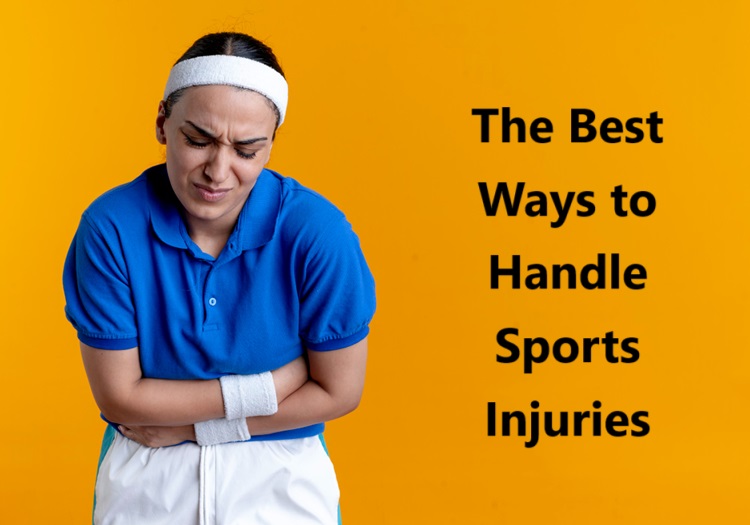Sports injuries are most common among athletes. These injuries are often related to the musculoskeletal system, namely joints, muscles and other soft tissues.
A sports injury can be debilitating and impact one’s athletic career considerably. Thus, effective treatment is crucial. To learn about the best treatment options for such injuries, read this article till the end.
Types of Sports Injuries
The following are the most common injuries that can happen during sports.
Fractures: A break in the bone is called a fracture. A bone can break in many ways. Thus, there is more than one type of fracture. Each one is handled by an orthopedic doctor differently.
Cartilage Damage: Each bone end has a soft-tissue cover, called cartilage. It allows for smooth movements of the joint. Injuries during sports can also damage cartilage.
Meniscal Injuries: Each knee has two soft-tissue pads; each pad is called a meniscus, which works as a shock-absorbing factor in the knee. Accidents or traumas can also lead to meniscal injuries that cannot heal on their own and thus require medical attention.
Labrum Tears: The hip is a ball-and-socket joint. The socket part is a concave-like structure. On the rim of this socket, there lies a soft-tissue pad called the labrum. Labrum tears are injuries to such soft tissue.
Dislocation: The hip and the shoulder both are examples of ball-and-socket joints. Such joints are subject to dislocation due to strong external traumas.
Tendon Injuries: Tendons are crucial parts of the musculoskeletal system. It is soft tissue that connects a muscle to a bone. An external injury can impact a tendon in three ways: pulling it beyond its capacity, partial tears and a complete tear.
Sprains: A ligament is another soft-tissue band that is the most crucial part of the joint. It connects one bone to another. Ligament injuries are most common among athletes.
A ligament injury is called a sprain. There are three types of sprains, namely, grade 1, grade 2 and grade 3.
40
Muscle Strains: When we use the body or any other part of the body beyond its capacity, it results in muscle strains. The muscles get damaged due to overuse.
Have you injured your ankle or foot? Book your appointment with the best specialist by visiting the link: foot and ankle specialist in Delhi.
Diagnosis
An accurate diagnosis is crucial to ensure an effective treatment. Thus, an orthopedic doctor will first examine the injury with any of the following tests. Once the exact extent of the injury has been assessed, the most suitable treatment will be provided.
- X-ray
- MRI
- CT Scan
In sport-related injuries, an X-ray is often used to rule out the possibility of fractures or to learn about the extent (severity) of breaks in a bone. However, this test doesn’t tell anything about the conditions of soft tissues.
R.I.C.E.
Immediately after getting injured, follow these steps.
Rest: Don’t move the injured part. Keep it still in a comfortable position. It helps ensure that the injury doesn’t get worse.
Ice: Apply an ice pack. Keep the ice pack on the injured part for 15-20 minutes at a time. Repeat this at intervals of 2-3 hours. Use this technique within 1-2 days after injury. It helps reduce swelling.
Compression: Wrapping the injured part is called compression. Use an ACE bandage to compress the area. Don’t wrap too tightly or it will cause more swelling instead of reducing.
Elevation: Keeping the injured part at the level of the heart is known as Elevation. For example, for any injury down the waist, lie down on your back and raise the injured part at the level of the heart. You can use pillows for elevation.
These techniques help reduce swelling, tenderness and pain. Rest, Ice Application, Compression and Elevation together constitute the best first aid post-injury.
If the pain and discomfort don’t go away and the injury doesn’t seem to heal itself, consult a doctor. To consult the best sport-related injury specialist, go to the following link: sports medicine doctor in Delhi.
Treatment Options
Doctors often treat sports injuries with the help of the following treatment options.
Physical Therapy: This therapy, also known as physiotherapy, involves exercises, massages, hand movements (manual therapy) and prevention education. Exercise and manual therapy help boost the body’s healing capacity while prevention education focuses on ensuring that the same injury doesn’t happen again in the future.
Furthermore, this therapy also helps strengthen injured body parts.
Activity Modification: Doctors often order people with sports injuries to stop moving the injured part so that it doesn’t get hurt any further. An injured person will have to stay away from certain movements for a while so that the injury can heal.
Immobilisation: Braces, splints and casts are often used to treat sports injuries like broken bones and dislocations. These all help immobilise the injured part so that it can heal naturally without any problems.
Pain-Relief Medicines: Anti-inflammatory medicines help relieve pain.
Surgery: If an injury cannot be treated with any other options, surgery becomes inevitable. There are two types of surgeries, namely arthroscopic and open.
Open surgery involves exposing the injured body part through large incisions.
Conclusion
Rest, apply ice packs, use a compression bandage to wrap the injured part and finally keep the injured part at some height above the heart level. These steps help reduce swelling after the injury.







